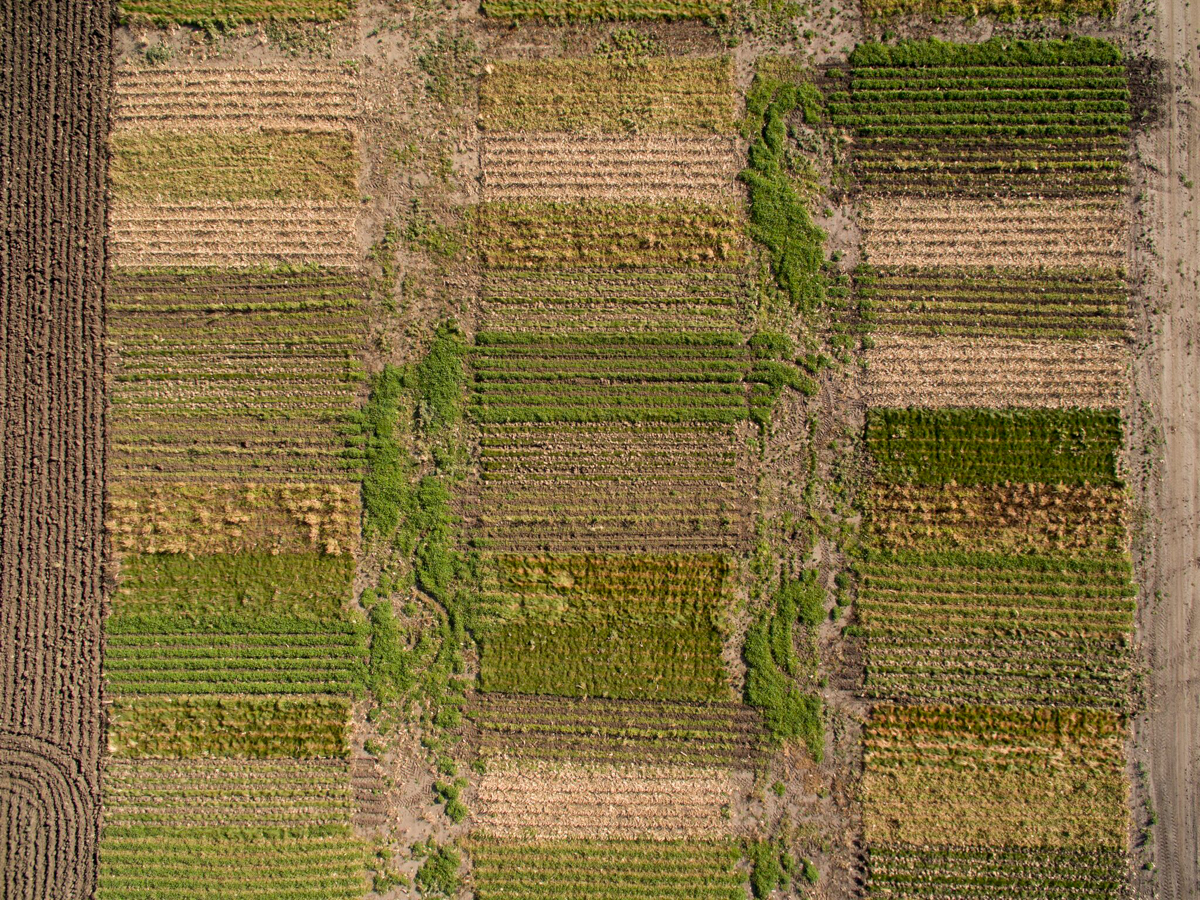January 8, 2024
Satellite-based remote sensing allows us to see much more than we can see when standing on the ground. New research from the University of Minnesota found, when combined with artificial intelligence, remote sensing could dramatically improve management of soybean aphid, an invasive pest that negatively impacts soybean yield and quality.
Published in the journal Crop Protection, the study shows that publicly available data from the Sentinel-2 satellite system (a pair of satellites orbiting Earth collecting imagery data) can be used to detect and classify infestations of soybean aphid in commercial fields.
This research was funded by the Minnesota Invasive Terrestrial Plants and Pests Center, supported by the Minnesota Environment and Natural Resources Trust Fund as recommended by the Legislative-Citizen Commission on Minnesota Resources.

Researchers compared Sentinel-2 imagery of commercial soybean fields with infestation assessments from staff manually counting aphids on plants in those fields. The team used regression analyses to determine if satellite data could detect plant stress caused by aphids.
They found:
- Stress to soybean plants caused by soybean aphid can be detected by satellite-based remote sensing.
- The abundance of soybean aphid was found to significantly affect simulated and actual Sentinel-2 satellite data.
- Using a machine learning algorithm called support vector machine, the researchers input actual satellite data and used the AI to accurately determine which soybean fields had high enough levels of aphid infestation to require insecticide applications to protect yields.
“Satellite data from dozens of commercial soybean fields have been successfully used to develop AI-predictions of when and where to spray for aphid control. This breakthrough shows the value of multidisciplinary research,” said David Mulla, a professor in the Department of Soil, Water and Climate.
Farmers traditionally determine when and where to apply insecticides by walking through fields and counting aphids on individual plants and relating that estimated abundance to a treatment threshold. This laborious, time-consuming task deters some farmers from implementing integrated pest management. These research findings support more efficient pest scouting methods, increasing the economic and environmental sustainability of soybean production.
“The findings of this study can benefit the farmers directly with practical management decisions, and also the scientific community because the methods developed here can be expanded to other studies with multiple pests,” said lead author Arthur Ribeiro, a post-doctoral associate in the Department of Entomology.
Further research is needed to improve the ability to distinguish stress caused by soybean aphid from that caused by other stressors such as drought, disease or other pests.
“This tool provides the groundwork for developing a system to help farmers save time and money by prioritizing fields for more intensive ground- or drone-based scouting, and possibly enabling decision making for individual fields,” said Robert Koch, a professor in the Department of Entomology.
Some historical data used in the analyses was funded by the Minnesota Soybean Research and Promotion Council; the Agriculture and Food Research Initiative of the USDA’s National Institute of Food and Agriculture (competitive grant 2016-70006-25828); the University of Minnesota MnDRIVE Initiative; and National Council for Scientific and Technological Development (CNPq/Brazil).
Related content
Economic-threshold-based classification of soybean aphid, Aphis glycines, infestations in commercial soybean fields using Sentinel-2 satellite data, research paper published in Crop Protection, 2024 (author's manuscript is also available)
U of M researchers work towards sustainable, pest-resistant soybeans, article
Decreasing environmental impacts of soybean aphid management, research project
Developing pest-resistant soybean for sustainable management of soybean aphids and Japanese beetles, research project